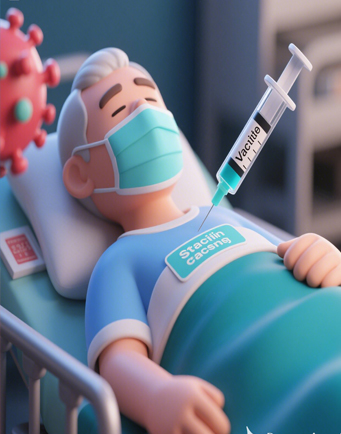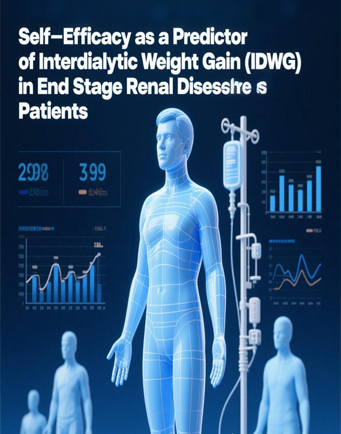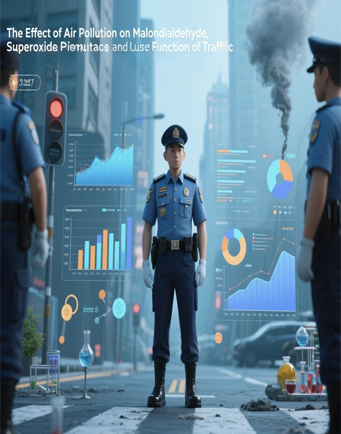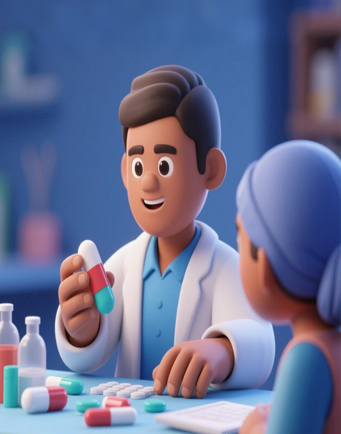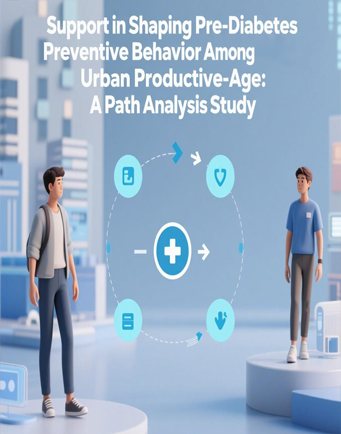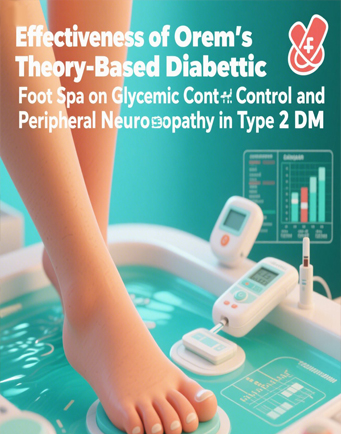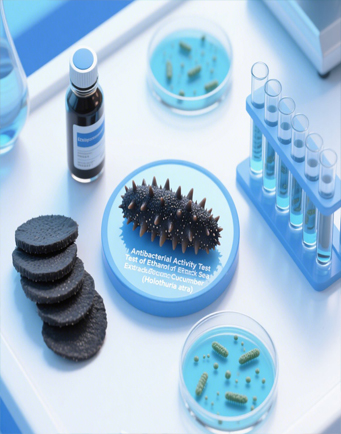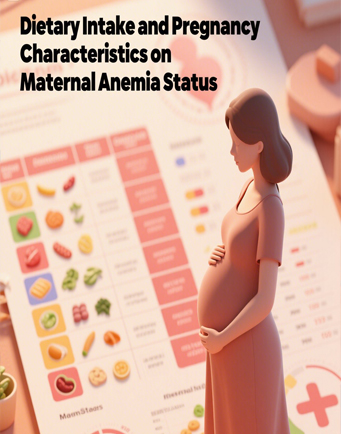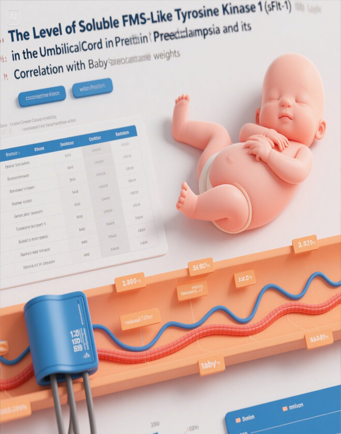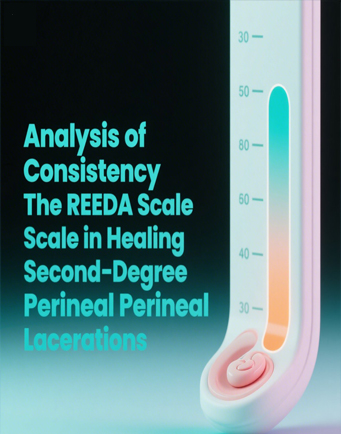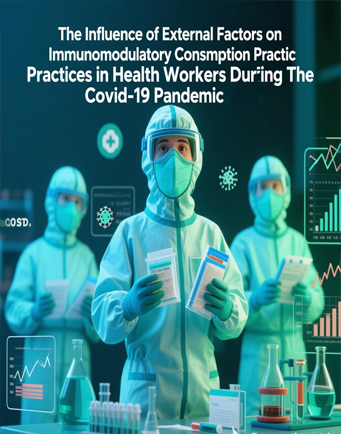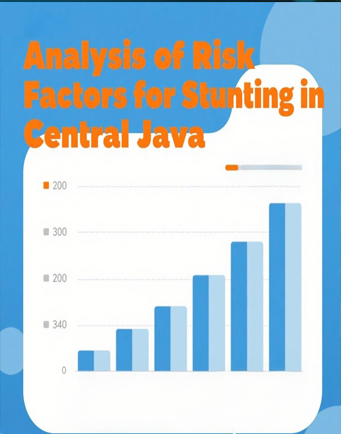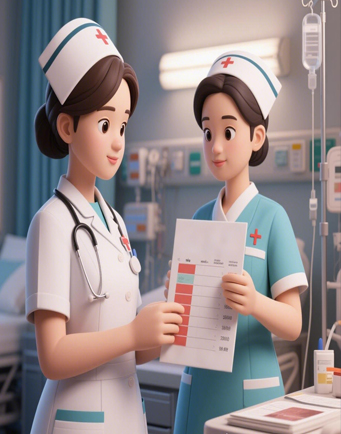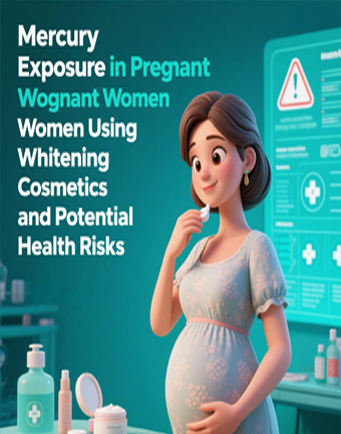Bioactive Compounds of the Ethanol Extract of Butterfly Pea Petals (Clitorea ternatea L.) on Gastric Proton Pump: In-Silico Analysis
Downloads
The biodiversity of medicinal plants in Indonesia reflects the potential to be used to treat non-communicable diseases such as cancer. Gastritis is a kind of symptom felt in the stomach that may trigger severe abnormalities leading to a state of cancer. This study aims to determine the potential of bioactive compounds derived from the ethanol extract of butterfly pea petals (Clitoria ternatea L.) as an in-silico anti-gastritis drug candidate. This study was a descriptive study with a qualitative approach. The molecular docking method applied specific docking using PLANTS software. The results of molecular docking indicated that there might be a similar potential as the control drug in inhibiting the gastric proton pump. Based on the analysis of the LCHRMS results, flavonoid compounds in the extract of butterfly pea petals were found to be used for docking analysis. Each flavonoid compound and the docking score from highest to lowest were Rutin (-87.05), Quercetin-3β-D-glucoside (-79.30), Quercetin (-79.28), Kaempferol (-74.80), Trifolin (-74.22), Genistein (-69.70), Kaempferol-3-glucoside-3''rhamnoside (-67.79), Biochanin A(1−) (-67.64), and Mauritianin (-58.26). The flavonoid compound named Rutin had the highest docking score above the two control drugs of Omeprazole (-66.27) and Vonoprazan (-84.45). It can be concluded that based on the in-silico study, the flavonoid compound of Rutin in the ethanol extract of butterfly pea petals (Clitoria ternatea L.) had the potential to inhibit the gastric proton pump to prevent gastritis. The chemical structure of Rutin differs from the two control drugs because it has a more complex structure consisting of five benzene rings. Further dynamic molecular tests are recommended to find out which flavonoid compounds have the most stable affinity for the target protein. Based on the in-silico test, in vivo and in vitro studies should be performed to find out more information about the potential of the flavonoid compounds in butterfly pea extract to inhibit the action of the gastric proton pump.
Aditiyarini, D., & Iswuryani, E. O. (2021). Effect of various factors on anthocyanins extraction from butterfly pea flower (Clitoria ternatea l.). Nova Biotechnologica et Chimica, 20(1), e817. https://doi.org/10.36547/nbc.817
Ardalani, H., Hadipanah, A., & Sahebkar, A. (2019). Medicinal Plants in the Treatment of Peptic Ulcer Disease: A Review. Mini-Reviews in Medicinal Chemistry, 20(8), 662-702. https://doi.org/10.2174/1389557520666191227151939
Bordbar, G., Miri, M. B., Omidi, M., Shoja, S., & Akhavan, M. (2020). Comparison of a Novel Herbal Medicine and Omeprazole in the Treatment of Functional Dyspepsia: A Randomized Double-Blinded Clinical Trial. Gastroenterology Research and Practice, 2020 (5152736). https://doi.org/10.1155/2020/5152736
Davis, A. M., & Teague, S. J. (2010). ChemInform Abstract: Hydrogen Bonding, Hydrophobic Interactions, and Failure of the Rigid Receptor Hypothesis. ChemInform, 30(24). https://doi.org/10.1002/chin.199924325
Deorankar, P., Gangiwale, R., Chintamani, R., & Singh, R. P. (2020). Evaluation of ethanolic and aqueous extract of clitoria ternatea for antimicrobial activity. Indian Journal of Natural Products and Resources (IJNPR)[Formerly Natural Product Radiance (NPR)], 11(3), 194-198. http://doi.org/10.56042/ijnpr.v11i3.29958
Dias, R., & de Azevedo Jr., W. (2008). Molecular Docking Algorithms. Current Drug Targets, 9(12), 1040-1047. https://doi.org/10.2174/138945008786949432
Dubey, S., Ganeshpurkar, A., Shrivastava, A., Bansal, D., & Dubey, N. (2013a). Rutin exerts antiulcer effect by inhibiting the gastric proton pump. Indian Journal of Pharmacology, 45(4), 415-417. https://doi.org/10.4103/0253-7613.115011
Dubey, S., Ganeshpurkar, A., Bansal, D., & Dubey, N. (2013b). Experimental studies on bioactive potential of rutin. Chronicles of Young scientists, 4(2), 153-157. https://doi.org/10.4103/2229-5186.115556
Egert, S., & Rimbach, G. (2011). Which sources of flavonoids: Complex diets or dietary supplements?. Advances in Nutrition, 2(1), 8-14. https://doi.org/10.3945/an.110.000026
Elseweidy, M. (2011). Role of Natural Antioxidants in Gastritis. Gastritis and Gastric Cancer - New Insights in Gastroprotection, Diagnosis and Treatments. https://doi.org/10.5772/24336
Engevik, A. C., Kaji, I., & Goldenring, J. R. (2020). The physiology of the gastric parietal cell. Physiological Reviews, 100(2), 573-602. https://doi.org/10.1152/physrev.00016.2019
Ganeshpurkar, A., & Saluja, A. K. (2017). The Pharmacological Potential of Rutin. Saudi Pharmaceutical Journal, 25(2), 149-164. https://doi.org/10.1016/j.jsps.2016.04.025
Jaafar, N. F., Ramli, M. E., & Salleh, R. M. (2020). Optimum extraction condition of clitorea ternatea flower on antioxidant activities, total phenolic, total flavonoid and total anthocyanin contents. Tropical Life Sciences Research, 31(2), 1-17. https://doi.org/10.21315/tlsr2020.31.2.1
Jeyaraj, E. J., Lim, Y. Y., & Choo, W. S. (2020). Extraction methods of butterfly pea (Clitoria ternatea) flower and biological activities of its phytochemicals. Journal of Food Science and Technology, 58, 2054-2067. https://doi.org/10.1007/s13197-020-04745-3
Kementerian Kesehatan Republik Indonesia. (2020). Peraturan Menteri Kesehatan Republik Indonesia Nomor 21 Tahun 2020 Tentang Rencana Strategis Kementerian Kesehatan Tahun 2020-2024. Jakarta: Kementerian Kesehatan Republik Indonesia.
Korb, O., Stützle, T., & Exner, T. E. (2009). Empirical scoring functions for advanced Protein-Ligand docking with PLANTS. Journal of Chemical Information and Modeling, 49(1), 84-96. https://doi.org/10.1021/ci800298z
Laloo, D., Sinha, S. K., Prasad, S. K., & Hemalatha, S. (2021). Gastric H+, K+-ATPase inhibitory effects of the active constituent isolated from Potentilla fulgens roots: An in vivo and in silico molecular docking studies. Phytomedicine Plus, 1(3), 100037. https://doi.org/10.1016/j.phyplu.2021.100037
Lindberg, P., Brndstrm, A., Wallmark, B., Mattsson, H., Rikner, L., & Hoffmann, K. J. (1990). Omeprazole: The first proton pump inhibitor. Medicinal Research Reviews, 10(1), 1-54. https://doi.org/10.1002/med.2610100102
Ludin, N. A., Al-Alwani, M. A., Mohamad, A. B., Kadhum, A. A. H., Hamid, N. H., Ibrahim, M. A., ... & Sopian, K. (2018). Utilization of natural dyes from zingiber officinale leaves and clitoria ternatea flowers to prepare new photosensitisers for dye-sensitised solar cells. Int. J. Electrochem. Sci, 13(8), 7451-7465. https://doi.org/10.20964/2018.08.04
Ma’ruf, N. Q., Antasionasti, I., Fatimawali, F., & Tallei, T. (2021). Analisis GC-MS Ekstrak Metanol dan N-Heksan dari Bunga Telang (Clitoria ternatea L.). Pharmacon, 10(2), 857-862. https://doi.org/10.35799/pha.10.2021.34035
Metz, D. C., Ferron, G. M., Paul, J., Turner, M. B., Soffer, E., Pisegna, J. R., & Bochenek, W. J. (2002). Proton pump activation in stimulated parietal cells is regulated by gastric acid secretory capacity: A human study. Journal of Clinical Pharmacology, 42(5), 512-519. https://doi.org/10.1177/00912700222011562
Muhammad Ezzudin, R., & Rabeta, M. S. (2018). A potential of telang tree (Clitoria ternatea) in human health. Food Research, 2(5), 415-420. https://doi.org/10.26656/fr.2017.2(5).073
Olbe, L., Carlsson, E., & Lindberg, P. (2003). A proton-pump inhibitor expedition: The case histories of omeprazole and esomeprazole. Nature Reviews Drug Discovery, 2, 132-139. https://doi.org/10.1038/nrd1010
Parikesit, A. A., Anurogo, D., & Putranto, R. A. (2017). Pemanfaatan bioinformatika dalam bidang pertanian dan kesehatan (The utilization of bioinformatics in the field of agriculture and health). E-Journal Menara Perkebunan, 85(2), 105-115. https://doi.org/10.22302/iribb.jur.mp.v85i2.237
Purnomo, H. (2019). Molecular Docking Parasetamol dan Analognya Menggunakan PLANTS (Protein-Ligands ANT-System). Rapha Publishing.
Rawla, P., & Barsouk, A. (2019). Epidemiology of gastric cancer: Global trends, risk factors and prevention. In Przeglad Gastroenterologiczny, 14(1), 26-38. https://doi.org/10.5114/pg.2018.80001
Reyes-Chilpa, R., Baggio, C. H., Alavez-Solano, D., Estrada-Muñiz, E., Kauffman, F. C., Sanchez, R. I., & Mesia-Vela, S. (2006). Inhibition of gastric H+,K+-ATPase activity by flavonoids, coumarins and xanthones isolated from Mexican medicinal plants. Journal of Ethnopharmacology, 105(1–2), 167-172. https://doi.org/10.1016/j.jep.2005.10.014
Rugge, M., Savarino, E., Sbaraglia, M., Bricca, L., & Malfartheiner, P. (2021). Gastritis: The clinico-pathological spectrum. Digestive and Liver Disease, 53(10), 1237-1246. https://doi.org/10.1016/j.dld.2021.03.007
Rugge, M., Sugano, K., Sacchi, D., Sbaraglia, M., & Malfertheiner, P. (2020). Gastritis: An Update in 2020. Current Treatment Options in Gastroenterology, 18, 488-503. https://doi.org/10.1007/s11938-020-00298-8
Sachs, G., Shin, J. M., & Howden, C. W. (2006). Review article: The clinical pharmacology of proton pump inhibitors. Alimentary Pharmacology and Therapeutics, 23(SUPPL. 2), 2-8. https://doi.org/10.1111/j.1365-2036.2006.02943.x
Sachs, George, Shin, J. M., Vagin, O., Lambrecht, N., Yakubov, I., & Munson, K. (2007). The gastric H,K ATPase as a drug target: Past, present, and future. Journal of Clinical Gastroenterology, 41(SUPPL.2), S226-S242. https://doi.org/10.1097/MCG.0b013e31803233b7
Sarkar, A., & Kellogg, G. E. (2009). Book Review of Computational Drug Design. A Guide for Computational and Medicinal Chemists. Journal of Medicinal Chemistry, 52(15), 4977. https://doi.org/10.1021/jm900605k
Seyedsadjadi, N., & Grant, R. (2021). The potential benefit of monitoring oxidative stress and inflammation in the prevention of non-communicable diseases (NCDs). In Antioxidants, 10(1), 15. https://doi.org/10.3390/antiox10010015
Sofi, S. H., Nuraddin, S. M., Amin, Z. A., Al-Bustany, H. A., & Nadir, M. Q. (2020). Gastroprotective activity of Hypericum perforatum extract in ethanol-induced gastric mucosal injury in Wistar rats: A possible involvement of H+/K+ ATPase α inhibition. Heliyon, 6(10), E05249. https://doi.org/10.1016/j.heliyon.2020.e05249
Spyrakis, F., Sarkar, A., & Kellogg, G. E. (2021). Docking, Scoring, and Virtual Screening in Drug Discovery. Burger’s Medicinal Chemistry and Drug Discovery. https://doi.org/10.1002/0471266949.bmc301
Thuy, N. M., Minh, V. Q., Ben, T. C., Nguyen, M. T. T., Ha, H. T. N., & Van Tai, N. (2021). Identification of anthocyanin compounds in butterfly pea flowers (Clitoria ternatea L.) by ultra performance liquid chromatography/ultraviolet coupled to mass spectrometry. Molecules, 26(15), 4539. https://doi.org/10.3390/molecules26154539
Ulimaz, T. A., Ustari, D., Aziza, V., Suganda, T., Concibido, V., Levita, J., & Karuniawan, A. (2020). Genetic Diversity of Butterfly Pea [Clitoria ternatea] from Indonesia Based on Flower and Yield Component Traits in Two Land Conditions. Jurnal AgroBiogen, 16(1). https://doi.org/10.21082/jbio.v16n1.2020.p1-6
Umre, R., Ganeshpurkar, A., Ganeshpurkar, A., Pandey, S., Pandey, V., Shrivastava, A., & Dubey, N. (2018). In vitro, in vivo and in silico antiulcer activity of ferulic acid. Future Journal of Pharmaceutical Sciences, 4(2), 248-253. https://doi.org/10.1016/j.fjps.2018.08.001
Wang, Y., Liu, M., & Gao, J. (2020). Enhanced receptor binding of SARS-CoV-2 through networks of hydrogen-bonding and hydrophobic interactions. Proceedings of the National Academy of Sciences of the United States of America, 117(25), 13967-13974. https://doi.org/10.1073/pnas.2008209117
Zahran, E. M., Abdelmohsen, U. R., Hussein, A. S., Salem, M. A., Khalil, H. E., Yehia Desoukey, S., Fouad, M. A., & Kamel, M. S. (2021). Antiulcer potential and molecular docking of flavonoids from Ocimum forskolei Benth., family Lamiaceae. Natural Product Research, 35(11), 1933-1937. https://doi.org/10.1080/14786419.2019.1645662
Zhang, W., Lian, Y., Li, Q., Sun, L., Chen, R., Lai, X., Lai, Z., Yuan, E., & Sun, S. (2020). Preventative and therapeutic potential of flavonoids in peptic ulcers. Molecules, 25(20), 4626. https://doi.org/10.3390/molecules25204626
Copyright (c) 2023 JURNAL INFO KESEHATAN

This work is licensed under a Creative Commons Attribution-NonCommercial-ShareAlike 4.0 International License.
Copyright notice
Ownership of copyright
The copyright in this website and the material on this website (including without limitation the text, computer code, artwork, photographs, images, music, audio material, video material and audio-visual material on this website) is owned by JURNAL INFO KESEHATAN and its licensors.
Copyright license
JURNAL INFO KESEHATAN grants to you a worldwide non-exclusive royalty-free revocable license to:
- view this website and the material on this website on a computer or mobile device via a web browser;
- copy and store this website and the material on this website in your web browser cache memory; and
- print pages from this website for your use.
- All articles published by JURNAL INFO KESEHATAN are licensed under the Creative Commons Attribution 4.0 International License. This permits anyone to copy, redistribute, remix, transmit and adapt the work provided the original work and source is appropriately cited.
JURNAL INFO KESEHATAN does not grant you any other rights in relation to this website or the material on this website. In other words, all other rights are reserved.
For the avoidance of doubt, you must not adapt, edit, change, transform, publish, republish, distribute, redistribute, broadcast, rebroadcast or show or play in public this website or the material on this website (in any form or media) without appropriately and conspicuously citing the original work and source or JURNAL INFO KESEHATAN prior written permission.
Permissions
You may request permission to use the copyright materials on this website by writing to jurnalinfokesehatan@gmail.com.
Enforcement of copyright
JURNAL INFO KESEHATAN takes the protection of its copyright very seriously.
If JURNAL INFO KESEHATAN discovers that you have used its copyright materials in contravention of the license above, JURNAL INFO KESEHATAN may bring legal proceedings against you seeking monetary damages and an injunction to stop you using those materials. You could also be ordered to pay legal costs.
If you become aware of any use of JURNAL INFO KESEHATAN copyright materials that contravenes or may contravene the license above, please report this by email to jurnalinfokesehatan@gmail.com
Infringing material
If you become aware of any material on the website that you believe infringes your or any other person's copyright, please report this by email to jurnalinfokesehatan@gmail.com.


